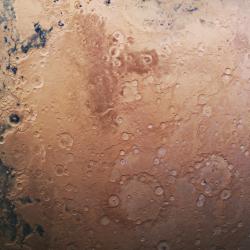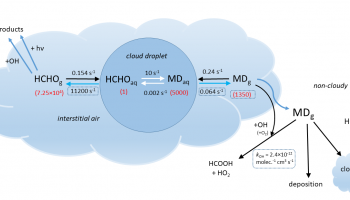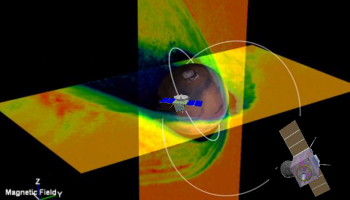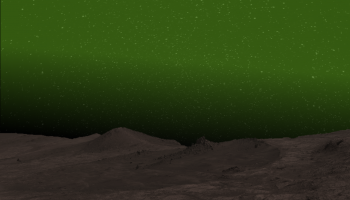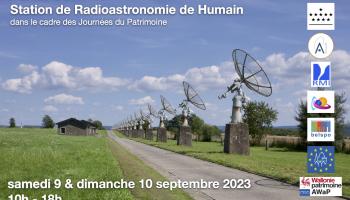A few years ago, formaldehyde processing by liquid clouds was claimed to be a very large source of formic acid in the Earth's atmosphere. Now, a new study demonstrated that this process accounts for less than 10% of the source required to close the global budget of formic acid. It appears that the missing source of formic acid remains decidedly elusive!
ESA, the European Space Agency, has downselected the shortlist for its next ‘medium’ science mission to three finalists: M-Matisse, Plasma Observatory and Theseus. BIRA-IASB is involved in 2 out of the 3 selected candidates.
When future astronauts explore Mars’s poles, they will see a green glow lighting up the night sky. For the first time, a visible nightglow has been detected in the martian atmosphere by ESA’s ExoMars Trace Gas Orbiter (TGO) mission. Under clear skies, the glow could be bright enough for humans to see by and for rovers to navigate in the dark nights.
For the first time in history, the Humain Radio Astronomy Station will open its doors to the public on Saturday 9 and Sunday 10 September. BIRA-IASB scientists will be on site to tell you about their observations and research into the Earth's magnetosphere and plasmasphere, as well as into meteors (shooting stars) and what they can teach us about Earth's atmosphere, about comets or the Solar System.
The Royal Belgian Institute for Space Aeronomy is currently working on an innovative optical system that will allow to determine concentrations of pollutants (SO2, NO2 and CO2) in ship plumes in a radius of about 5km around the measuring instrument.
The Copernicus Atmosphere Monitoring Service’s (CAMS) global system, which delivers daily global atmospheric composition analyses and forecasts, has undergone yesterday a major upgrade. The system now accounts for detailed chemical processes not only in the troposphere but also in the stratosphere, the upper layer of the atmosphere which contains the ozone layer.

